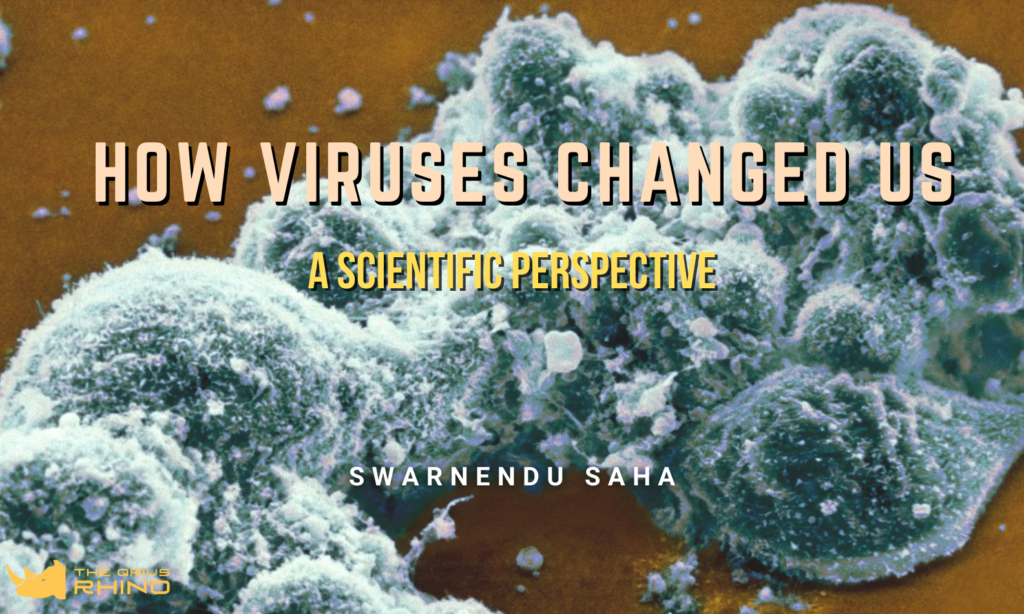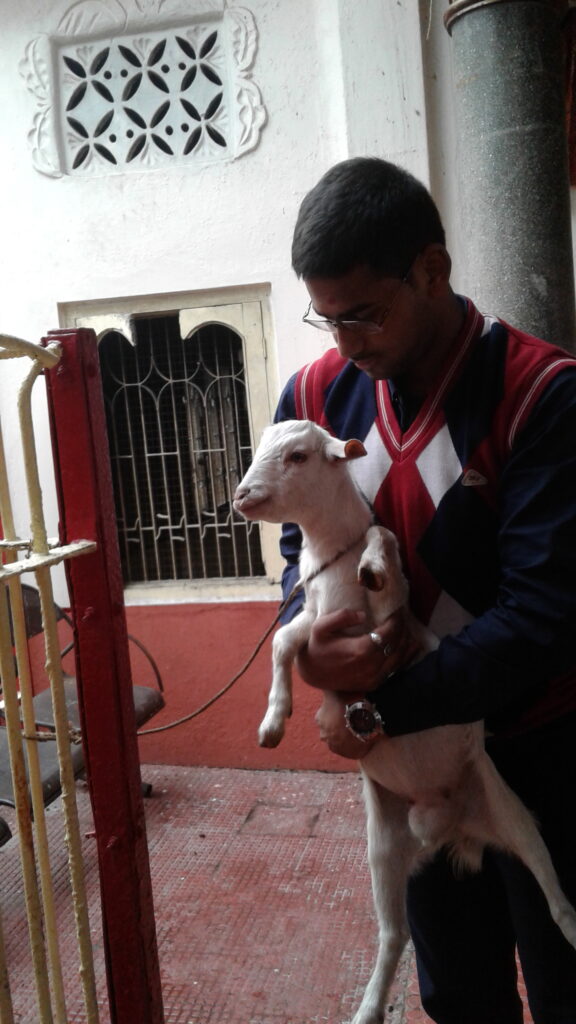
~ Part 1 ~
We are all frustrated about what has been going on around the world for the past year. Frustrated we are – cursing the virus. Why on earth has mother nature evolved it? Had there not been any virus today, we all would have been free. It is a real hack to sit back at home and face online classes. Had everything been alright, we would have already been on campus and enjoying ourselves. It looks like the third semester shall also pass on by sitting before this rectangular screen. Had there been no virus at all, it would have been the best place to survive, right?
Let’s assume that someone places us in the post of the almighty for a day, and we make the viruses’ disappear’ from the earth. According to our estimates, so far, 10 nonillions (10 to the 31st power) of individual viruses exist on our planet. To be precise, this is enough to assign one to every star in the universe and 100 million times over. Scientists have estimated the existence of approximately 10 nonillion (10 to the 31st power) individual viruses on our planet. To illustrate, this is enough to assign one to every star in the universe 100 million times over. All disappear. As if this is a fairy tale. WHOOSH!!
How would the world look?
The poliovirus is gone – no one talks about Ebola. No third world citizen dies due to rabies infection – Zika virus, yellow fever virus, all gone. Some monkeys carry the often fatal Herpes B virus, which would be gone too. Chickenpox, smallpox – all are obsolete terms. And to top it all, SARS-CoV2, the main villain of the show, is not there!
It is great to write about. And to read too !!
NO !! SORRY TO SAY !! I DIFFER !!
Is it all bad?
The word, virus, connotes morbidity and mortality, but that bad reputation is not universally deserved. Viruses, like bacteria, can be important beneficial microbes in human health and in agriculture.
Marilyn Roossinck, PhD, Professor of Plant Pathology and Environmental Microbiology and Biology at the Pennsylvania State University, University Park
Marilyn Roossinck, a professor of Plant Pathology, Environmental Microbiology and Biology at the Pennsylvania State University, published a review in the Journal of Virology summarizing how various scientific works have proven viruses to be benevolent. According to her, the situation is quite different from what we think it is.
We live in a world full of viruses – infiltrating every aspect of our natural world. We can find them everywhere you can imagine – in the seawater, the atmosphere, and soil. Generally considered non-living entities (although still regarded as debatable), these pathogens can only replicate with the help of a host. Viruses can hijack organisms from every branch of the tree of life, including many human cells. Mammals have been found to carry at least 320,000 different species of viruses. When you add the viruses infecting non-mammalian animals, plants, terrestrial bacteria, and every other possible host, the total comes to… well, let’s not count the uncountable!
Yet, our species manages to live in this virus-filled world relatively free of illness most of the time. According to Sara Sawyer, a virologist and disease ecologist at the University of Colorado Boulder, the reason has little to do with the human body’s resilience to disease but with the biological quirks of viruses themselves. These pathogens are amazingly picky about whom to infect. What’s good is that we can be threatened by only an infinitesimally small fraction of the viruses surrounding us. Many of these viruses play integral roles in keeping ecosystems in proper shape and order. Others keep individual organisms healthy – including all organisms that you can think of – fungi, plants, insects, humans, everyone!
We live in a balance, in a perfect equilibrium. I think we’d be done without viruses
Susana Lopez Charretón, Virologist at the National Autonomous University of Mexico
Did viruses begin their journey even before the living beings?
Truly speaking, we saw the light of day because of a virus! Yes, I mean ‘we’, as in ‘life ‘! We all know that life started its journey from the primordial soup – big oceans, made of molten rocks minerals – making the first maternity house for amino acids and protein. There must have been a transition between the ‘living’ and the ‘non-living’. And, what is a virus exactly — something between the two? Isn’t that spectacular?
Two lengths of DNA originated from viruses and now reside in the genomes of humans and other primates, for instance, without which—an astonishing fact—pregnancy would be impossible. Viral DNA, nestled among the genes of terrestrial animals, helps package and store memories—more astonishment—in tiny protein bubbles. Still, other genes co-opted from viruses contribute to the growth of embryos, regulate immune systems, resist cancer—significant effects only now beginning to be understood.
Role in evolution
Viruses, as it turns out, have played crucial roles in triggering major evolutionary transitions. For instance, in sharp contrast to the gastrointestinal distress viruses cause in humans, the murine (mouse infecting) norovirus plays a role in developing the mouse intestine and its immune system and can actually replace the beneficial effects of certain conditions gut bacteria when antibiotics have decimated these. A typical and healthy gut has bacteria that can help prevent infection by bacteria that cause gastrointestinal illness. Excessive antibiotic intake can kill the normal gut flora and make one vulnerable to gastrointestinal disease. However, norovirus infection of mice restored the normal function of the immune system’s lymphocytes and the typical morphology of the intestine, said Roossinck.
Actually, we can try to put everything together this way. The virus is a parasite. Accepted! It is a non-living entity outside the host organism’s body and depends upon the latter for reproduction. However, at times the parasitism becomes much like symbiosis. Both the host and its guest come together, creating an association and benefiting from each other’s presence and functions. Therefore, viruses can act as the flip side of the same coin when we talk about such associations.
What will you say is an explosive? A shameful invention by the Frankenstein humans? As it kills men? Or, is it a boon – made our life easier in many aspects wherever appropriately used in?
We can also treat viruses the same. Firstly, Viruses can be termed a phenomenon that can neither be good nor bad in all cases – delivering advantage or destruction. On top of that, the virus, the situation, and your point of reference define what fate will be. Thus, what makes them so interesting is how we can perceive them to be – dark angels of evolution, terrific and terrible.
Symbiosis with a virus?
Let us discuss an artificial symbiosis designed by man, which will make more sense.
Roossinck, in her laboratory, studied an exciting phenomenon. First, she created symbioses between the same virus-infected fungus and other plants. After that, she then pushed the soil temperature to 140 degrees, and guess what? The plants survived. The symbiosis with the virus enabled every plant in her experiment to survive at such elevated soil temperatures, including tomatoes. In addition to this, the viruses also provide various services for plants, as if a voluntary service.
Few plants grow in the hot soils that surround the geysers, such as the “Artists’ Paint Pots” of Yellowstone National Park. One such plant, a type of tropical panic grass, houses a unique symbiosis that includes a fungus that colonizes the plant and a virus that infects that fungus. In other words, all three members of this symbiosis are necessary for survival in soils simmering at more than 122 degrees Fahrenheit. In addition to this, investigators have also found that certain viruses can render some plants drought-tolerant. Scientists have discovered at least one example of virally conferred cold tolerance – discoveries that could help expand the ranges of crops.
The planet around us would cease to exist if there were no viruses!
Now, now, now !! Let me take a break. We all know how a virus, something between living and non-living, can destroy us! Our lives and our families! Our society and our economy! The proof is before us! And here, I am just going on saying that viruses are ‘needful’! Even some can be ‘good’! Even giving examples !!
Does this mean that all I have talked about till now is just a joke in front of all the damage a virus can cause?
Check the next part of this to find it out!
By,
Swarnendu Saha (2nd-year BS-MS student, Indian Institute of Science Education and Research Kolkata).
References:
- Roossinck, M. J. (2015). Move Over, Bacteria! Viruses Make Their Mark as Mutualistic Microbial Symbionts. Journal of Virology, 89(13), 6532–6535. doi:10.1128/jvi.02974-14
- American Society for Microbiology. “Viruses: You’ve heard the bad; here’s the good.” ScienceDaily. ScienceDaily, 30 April 2015.
- How ‘good’ viruses may influence health
- Mietzsch, M., & Agbandje-McKenna, M. (2017). The Good That Viruses Do. Annual Review of Virology, 4(1), iii–v. doi:10.1146/annurev-vi-04-071217-100011
- Farah, T. Sometimes, Viruses Can Be Good For Your Health. Jun 23, 2020 3:20 AM, Discover.
- Wei-Haas, M. Viruses, explained. Feb 23, 2019, Science – Reference, Nat. Geo.
- Wu, K.J. There are more viruses than stars in the universe. Why do only some infect us? Apr 15, 2020, Science – Coronavirus Coverage, Nat. Geo.
- Varshney, V. International Day for Biological Diversity 2020: Why viruses are necessary. May 22, 2020, Science and Technology, DownToEarth.
- Lodish H, Berk A, Zipursky SL, et al. Molecular Cell Biology. 4th edition. New York: W. H. Freeman; 2000. Section 6.3, Viruses: Structure, Function, and Uses. Available from: https://www.ncbi.nlm.nih.gov/books/NBK21523/
About the author:

A student of 3rd-semester IISER KOLKATA, I, Swarnendu Saha is a pass-out of South Point High School and is a travel enthusiast, who loves to travel anywhere, below the sky. Rather than saying which subject I like, let me say, I do not like Chemistry at all.